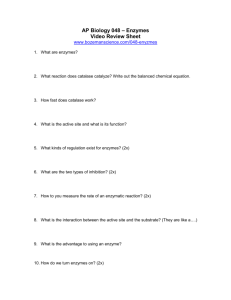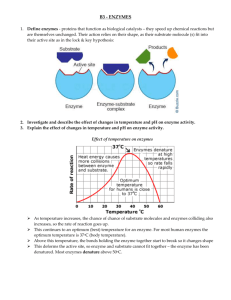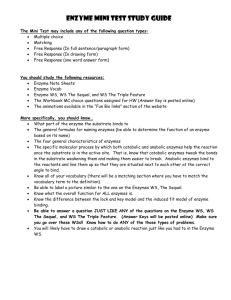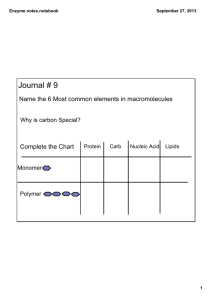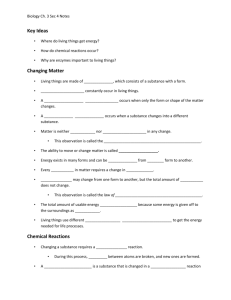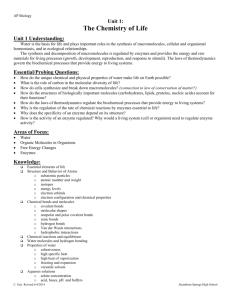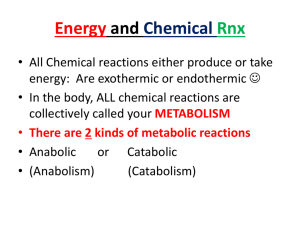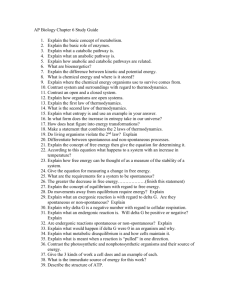Study Guide – Chapter 8 Energy and Enzymes
advertisement
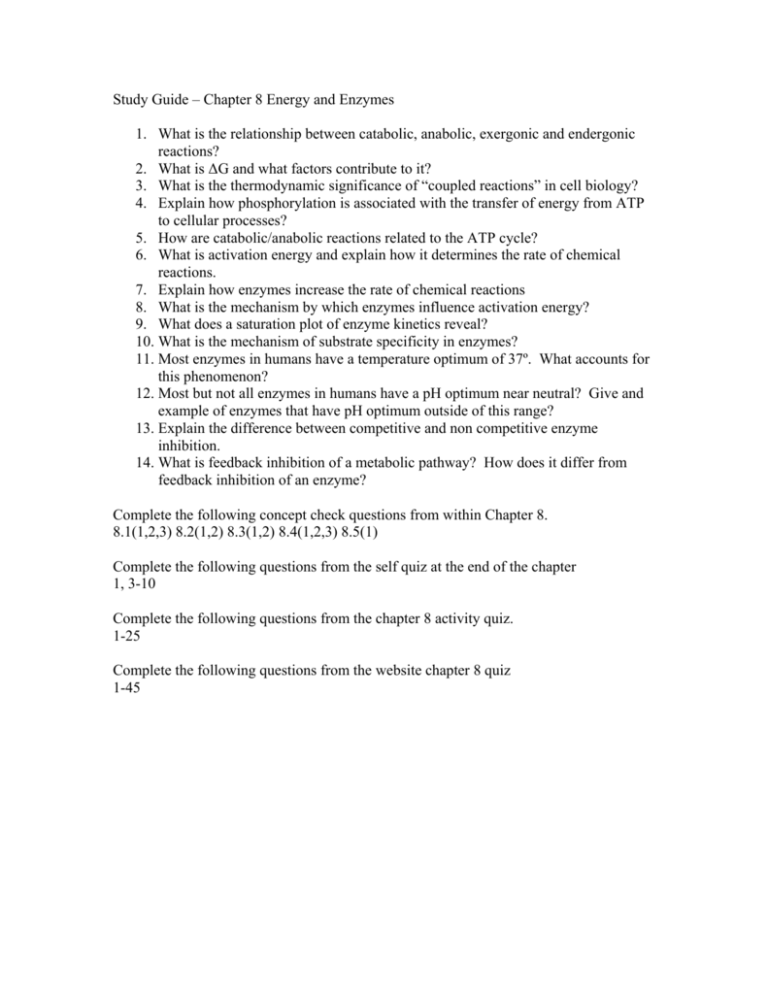
Study Guide – Chapter 8 Energy and Enzymes 1. What is the relationship between catabolic, anabolic, exergonic and endergonic reactions? 2. What is ΔG and what factors contribute to it? 3. What is the thermodynamic significance of “coupled reactions” in cell biology? 4. Explain how phosphorylation is associated with the transfer of energy from ATP to cellular processes? 5. How are catabolic/anabolic reactions related to the ATP cycle? 6. What is activation energy and explain how it determines the rate of chemical reactions. 7. Explain how enzymes increase the rate of chemical reactions 8. What is the mechanism by which enzymes influence activation energy? 9. What does a saturation plot of enzyme kinetics reveal? 10. What is the mechanism of substrate specificity in enzymes? 11. Most enzymes in humans have a temperature optimum of 37º. What accounts for this phenomenon? 12. Most but not all enzymes in humans have a pH optimum near neutral? Give and example of enzymes that have pH optimum outside of this range? 13. Explain the difference between competitive and non competitive enzyme inhibition. 14. What is feedback inhibition of a metabolic pathway? How does it differ from feedback inhibition of an enzyme? Complete the following concept check questions from within Chapter 8. 8.1(1,2,3) 8.2(1,2) 8.3(1,2) 8.4(1,2,3) 8.5(1) Complete the following questions from the self quiz at the end of the chapter 1, 3-10 Complete the following questions from the chapter 8 activity quiz. 1-25 Complete the following questions from the website chapter 8 quiz 1-45

